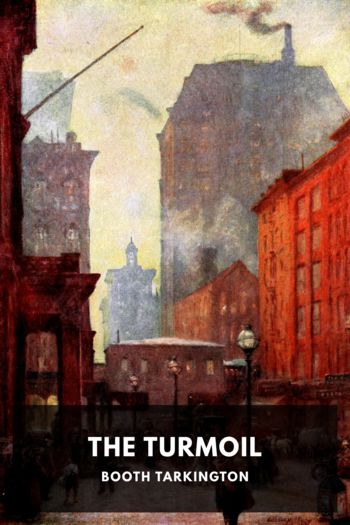Malaysian Maverick: Mahathir Mohamad in Turbulent Times Barry Wain (grave mercy .TXT) 📖

- Author: Barry Wain
Book online «Malaysian Maverick: Mahathir Mohamad in Turbulent Times Barry Wain (grave mercy .TXT) 📖». Author Barry Wain
Although the International Tin Agreement was one of the few successful global commodity agreements, Malaysia was becoming disenchanted with the pact's ability to deliver adequate returns on what was once the country's major foreign exchange earner. All 30 member countries, both producers and consumers, were required to contribute metal or cash to an International Tin Council buffer stock, where a manager was empowered to buy tin when the price fell below a specified level and sell when it rose above a certain point. A weakness from Malaysia's standpoint was that any increase in the price band had to win the backing of a majority of both producing and consuming members. When consumers led by the United States denied producers' demands for higher prices in July 1981, as Dr. Mahathir officially assumed the premiership, the Malaysian government instituted the Zaidner-inspired scheme.
In preparation for its covert attempts to prop up tin prices, the government involved ranking civil servants in the Ministry of Finance, the Ministry of Primary Industries and Bank Negara Malaysia, the central bank, as well as tin industry officials. To hide Malaysia's tracks, MMC executives incorporated a local company called Maminco Sdn. Bhd. with paid-up capital of just RM2, which became the government's secret vehicle to carry out the tin-buying plan. Abdul Rahim and an MMC accountant held one share each and served as directors. Nordin Ismail, a leading trader at MMC and Zaidner's friend, became general manager. The finance ministry directed state-owned Bank Bumiputra Malaysia Bhd. to extend credit to Maminco through its offshore branches to pay for the tin. Bank Bumiputra's coffers in turn were topped up with funds held offshore by the national oil and gas company, Petroliam Nasional Bhd., known as Petronas.
Maminco, which began buying tin in large quantities on the London Metal Exchange in July 1981, continued with the purchases through most of November. They were mainly for three-month forward delivery. Maminco traded through Zaidner and Marc Rich, who placed their orders through member firms of the exchange. Maminco also bought physical tin on the Penang market in Malaysia. The heavy buying forced up three-month futures prices by 20 per cent to about 8,600 pounds a tonne. The appearance of what the international press dubbed a mystery buyer was particularly conspicuous in the industry, since actual demand for tin was fairly slack as the developed world headed for recession. Experienced industry hands suspected Malaysia, but Dr. Mahathir's government consistently denied it.
The Malaysian-induced price rise helped producers obtain an increase of almost 6.9 per cent in the Tin Council's price-support range in October.[7] And it was not costing the Malaysians much, as buyers of three-month forward contracts had to pay only a 10 per cent deposit. But after four months the market began acting — well, like a market. The higher prices started to stimulate extra production, and when the United States announced it would sell some of its 170,000-tonne strategic stockpile of tin, Kuala Lumpur howled in protest.[8] Worse for the Malaysians, many London Metal Exchange traders, betting that the mystery buyer would not have deep enough pockets to sustain the operation, began to sell tin short three months forward, expecting prices to collapse.
As Pura reported in the Journal, these developments prompted an important switch in tactics by Zaidner and his Malaysian clients, "one that effectively changed the Malaysian plan from a price-support operation to an attempt to corner the tin market".[9] In late November, Malaysia switched from buying three-month futures to spot purchases of physical tin for cash. The tactic, provided Malaysia could maintain its spot buying, set up short-sellers for a squeeze. It meant that traders holding contracts to sell tin three months later, in February, might find no physical tin available to meet their obligations. They would have to buy tin from the mystery buyer at a higher price than that at which they contracted to sell, or default on their contracts.
The Malaysian move sent spot prices soaring to a peak of 8,970 pounds a tonne, and set off a global scramble by short-sellers to get tin into London Metal Exchange warehouses by late February 1982. While the Malaysians looked like they were going to make a killing, the stakes were soaring dramatically and Maminco became dangerously exposed. It needed to borrow huge sums, as much as RM1.5 billion at one point, at interest rates of around 20 per cent, and pay storage and insurance on bulging tin stocks that eventually reached 40,000 to 50,000 tonnes. Maminco had to bite the bullet and pay the cost of holding the hoard in order to keep prices high, because its most recent purchases were made at fairly high levels. The thinking was to sell 15,000 or 20,000 tonnes to the short-sellers at a huge profit to pay for the entire exercise, and hang on to 20,000 to 30,000 tonnes indefinitely.
Alas, ever-rising prices attracted more releases from the U.S. stockpile and supplies from other sources that had to be absorbed. At the same time, end users of tin began reducing their inventories as the economic recession deepened. With the tin market braced for an expected squeeze on short-sellers, the London Metal Exchange changed its rules and let trader-members off the hook. It permitted short-sellers





Comments (0)